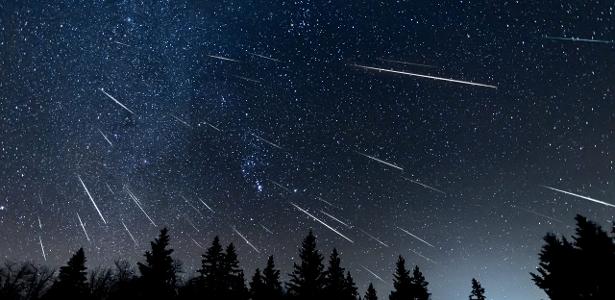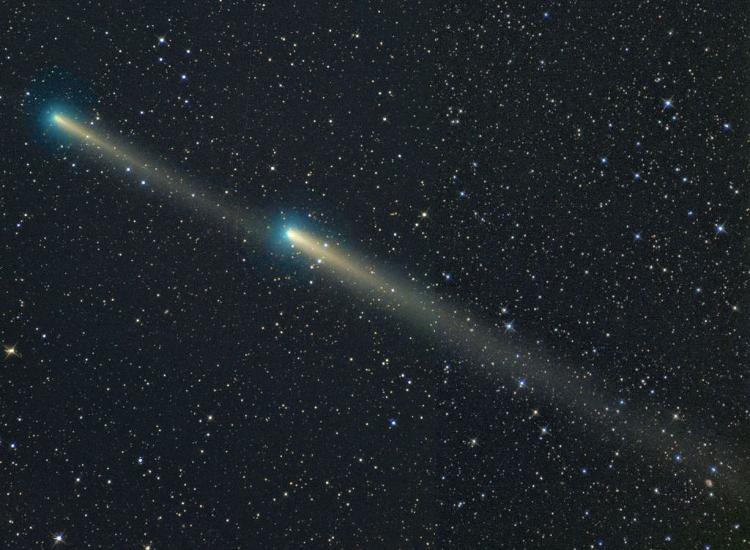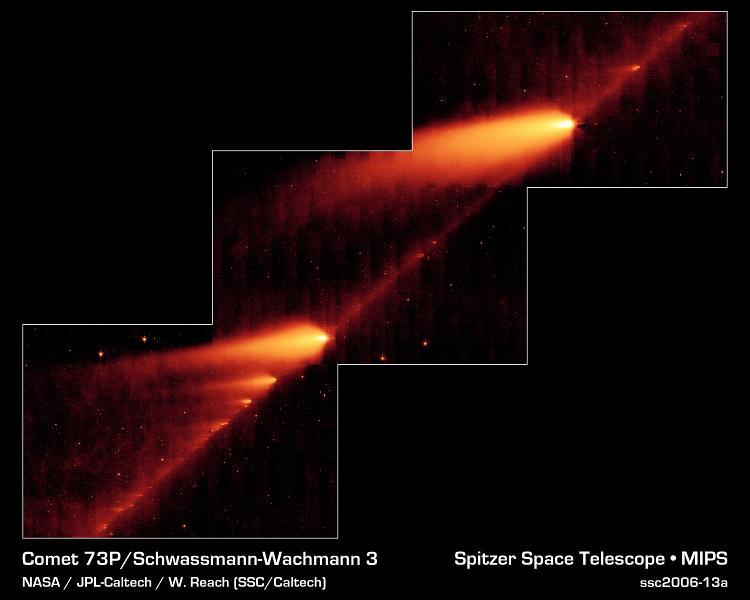
Astronomers have been predicting “hurricanes” from the Tau-Herculid meteor shower for years. If the researchers’ estimates are confirmed, the rare and long-awaited event with the potential for thousands of “shooting stars” per hour could occur next week.
If all goes well, meteors would hit our atmosphere at a speed of 16 km/s, which is considered low. Thus, lines of light can travel slower and longer, staying longer in the sky.
The peak of a potential storm is expected between Monday and Tuesday (May 30-31). The event will be better viewed from the Northern Hemisphere, but the possibility of creating a beautiful spectacle in the skies of Brazil cannot be ruled out.
The Tau-Herculids formed from the debris of Comet 73P/Schwassmann-Wachmann 3 (SW3), which is breaking up. Every year at this time, between the end of May and the beginning of June, the Earth passes a trail of dust and small rocks it left behind on the pass.
Typically, this shower is more discreet, with two or three meteors per hour. “It had a more intense activity when it was first observed in 1930. Later, it became much weaker,” says the amateur astronomer. lauriston Trinidad, member of bramon (Brazil’s Meteor Monitoring Network).
storm or rain?
It has been almost 200 years since this type of event of greater intensity has been observed. The last time the Leonids happened in the rain was in 1833—which caused panic in the United States (imagine, at the time, waking up at dawn with thousands of lights in the sky; would this be the end of the world?).
“Storm” is the term for a meteor shower that has an unusual, extremely intense outburst. They typically arise after the fragmentation of their “parent” asteroid or comet – a process that leaves a dense cloud of ejected particles in space.
“Over time, this cloud expands into the parent body’s orbit, causing annual meteor showers. Therefore, the more recent the fragmentation, the denser the cloud, and the more intense the meteor storm it generates”, explains Bremen. .
destruction of a comet
Comet SW3 was discovered in 1930 by German observers Arnold Schwemmann and Arno Arthur Wachmann. It was calculated to have a core about 1.5 km in diameter – relatively small – and orbit the Sun every 5.4 years.
But it disappeared from our skies for decades, only to be seen again in 1979, with a common appearance.
In 1995, however, its brightness suddenly increased: it was about 600 times brighter than even visible to the naked eye. Until that time, it was just a splurge on telescopes.
“A month later, astronomers found that the nucleus had broken up into a few large blocks during the journey. The observations pointed to at least four large fragments, two of which were in an apparent process of disintegration”, Trindade recalls.
In 2006, when it warmed on its return to the interior of the Solar System, the situation worsened: in March, there were already eight fragments; In April, dozens; In May, about 70, along a huge path.
The largest of them remains in the orbit, acting as a multinucleus. Eventually, the comet may completely disintegrate and become unrecoverable.
“The rupture produced fragments of various sizes; huge amounts of dust were thrown into space. Calculations indicate that on the night of May 30 to 31, the Earth will cross the dense region of debris vertically”, of Braemann to believe.
When these tiny rocks reach Earth’s atmosphere at high speed, they literally burn up and vaporize by friction, producing a luminous phenomenon called meteors (popularly called “shooting stars”).
uncertainty about the event
Since the 1995 fragmentation, astronomers have done calculations to predict this storm. “The major difficulty in predicting the dates and rates of meteors is knowing what the particle ejection velocity was during the breakup of the large blocks”, explains Trindade.
Studies indicate that, this year, Earth will pass through the cloud of debris left behind by Comet 73P in the past five passes: 1892, 1930, 1941, 1979 and 1995 (when the breakup happened).
“All expectations indicate that this will be a very high activity. But we know that the calculations are likely to fail, because this is something unprecedented and we don’t have enough data,” he said.
The show is not guaranteed yet. According to NASA, this will be an “all or nothing” moment: if during the breakup of the comet, particles were ejected from the nucleus at a speed of at least 354 km / h, we would have a beautiful storm. Otherwise, they wouldn’t hit our atmosphere – that is, we wouldn’t see meteors.
“It is not possible to predict with accuracy. It could be that nothing, it could be a light, intense rain and even a meteor storm, a rare and inspiring spectacle”, of Exos. says the astronomer coordinator, Marcelo De Sisco, project associate meteorite research.
how to observe
Despite its name, the radiance (point where meteors appear to converge) of the Tau-Herculides is the constellation Boeiro, known for the bright stars Arcturus and Vega.
Just find it, head northwest and look around you carefully. a compass or a Application Astronomy (such as Stellarium, Star Walk, Star Chart, Sky Safari and Sky View) can help.
The best places on the planet to follow the event are Mexico and the United States. The bad news for us is that, here in the Southern Hemisphere, the radiant will be very close to the horizon, making it a bit difficult to observe. In Brazil, we can see between 10% and 50% of meteors – the further north of the country, the more likely.
“It sounds like a little, but if the best-case scenarios are confirmed, it could mean thousands of meteors per hour, which would be spectacular”, highlights Trindade. The good news is that in the new phase the Moon, without glare, will darken the sky. Thus, even the least intense meteors can be observed.
The recommendations are the same for all showers: look for a location with low light pollution, with a good field of vision, get comfortable and wait, looking at the entire area around the bright one. The phenomenon is visible to the naked eye, without the need for any special equipment.
According to Braman, there must be at least three outbreaks of Tau-Herulds:
- May 31, 12:10 a.m. ET: Earth will pass the debris trail left by comets in 1892 and 1941. 50 meteors per hour are expected.
- May 31, 2:10 a.m.: Earth will hit the trail of 1979, and the 1995 burst will cause an even denser cloud cover. As it is the first time in history that we have interacted with these particles, the timing may (and may not even) vary. occur). Basic modeling indicates a rate of 600 to 700 meteors per hour. “However, given that the comet broke into several pieces in 1995, the intensity of this outburst could reach 10,000, or perhaps even 100,000 meteors per hour” during its maximum, Braman optimistically believes.
- June 25, 11:58 am: Earth will meet the trail left by 1930 Pass. Its intensity will be quite low, about three meteors per hour.
Outbreaks are unpredictable and short-lived, so keep an eye out. “Due to the uncertainty of the orbital positions of the other fragments of Comet SW3, we recommend that observations be made in the period from May 28 to June 1 always at dawn, with the possibility of seeing many meteors coming from the northwest direction. , close to the radiant”, emphasizes De Cisco.





